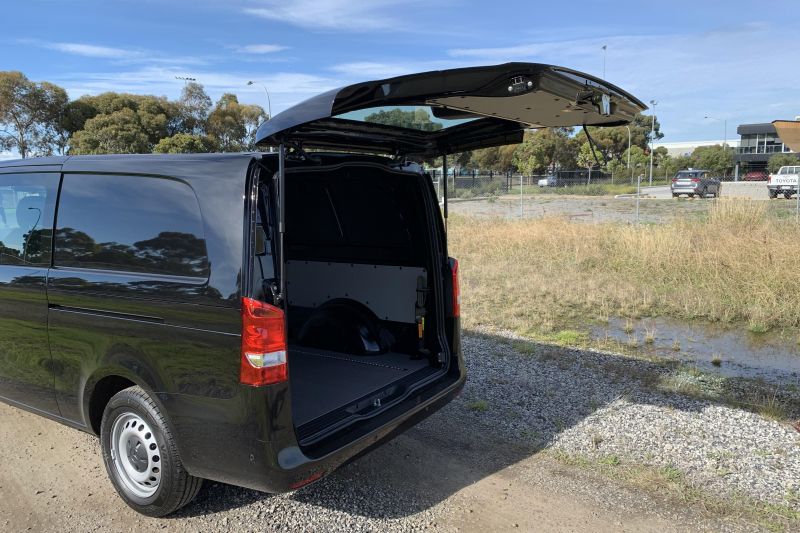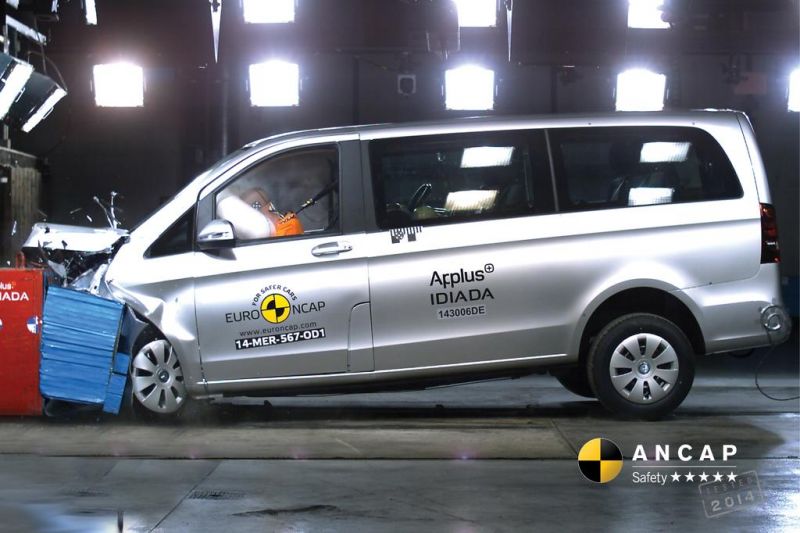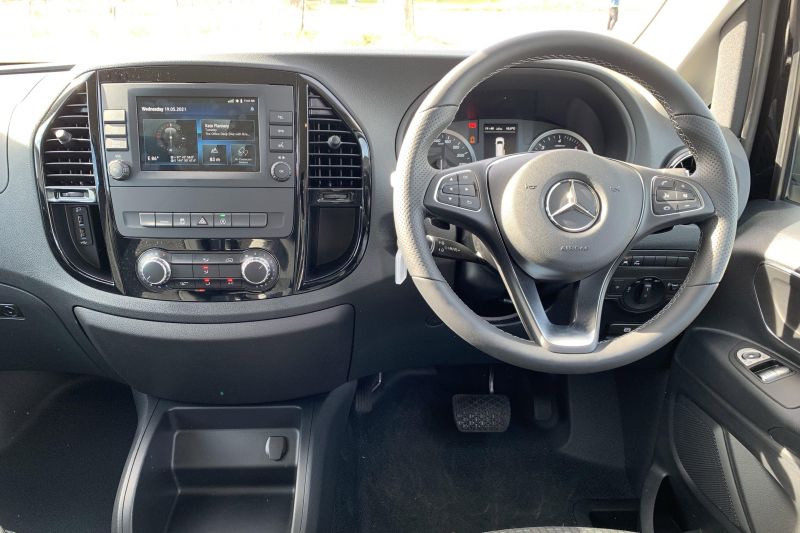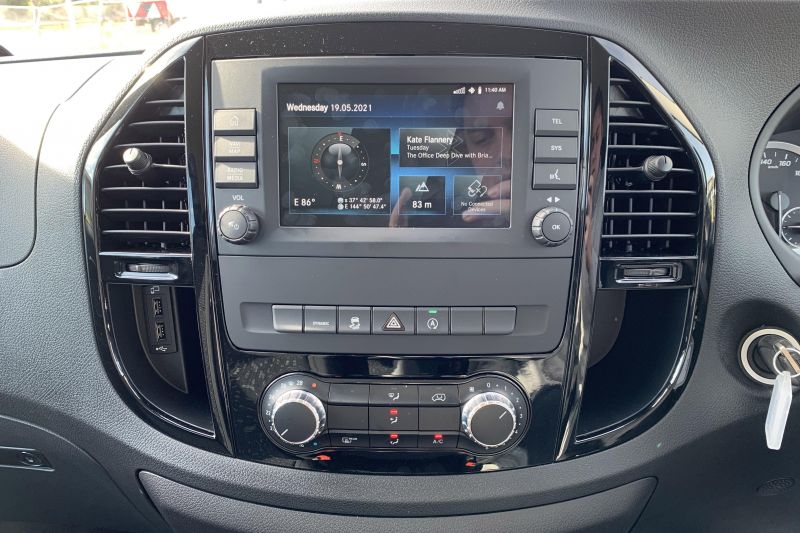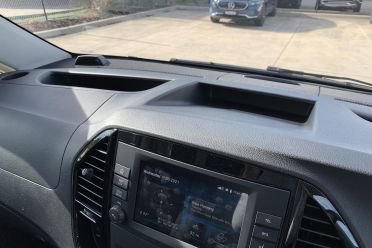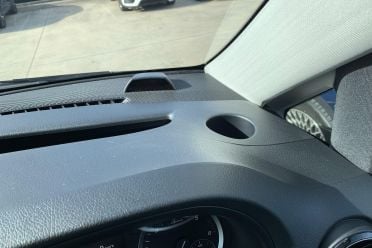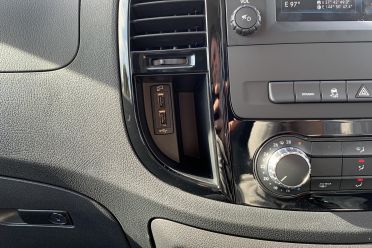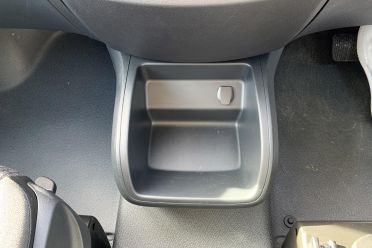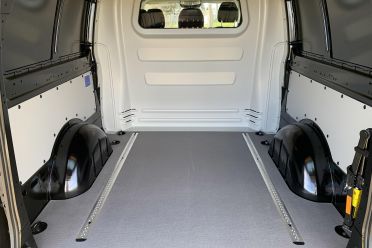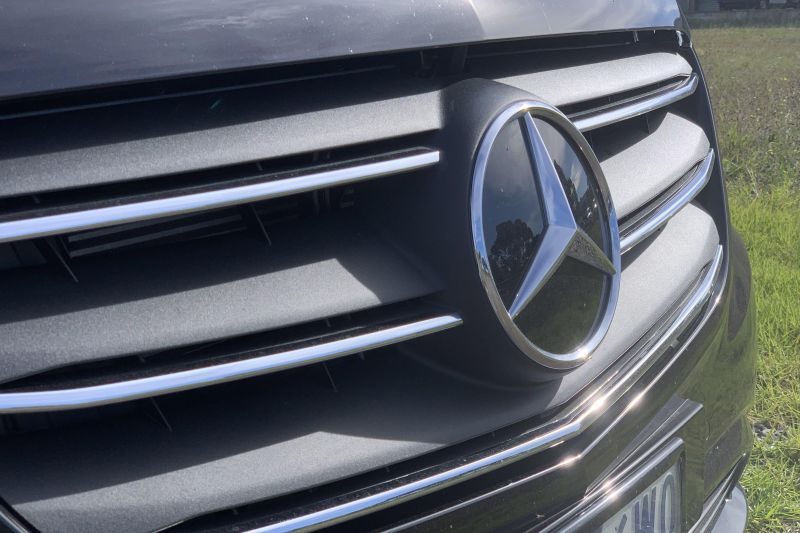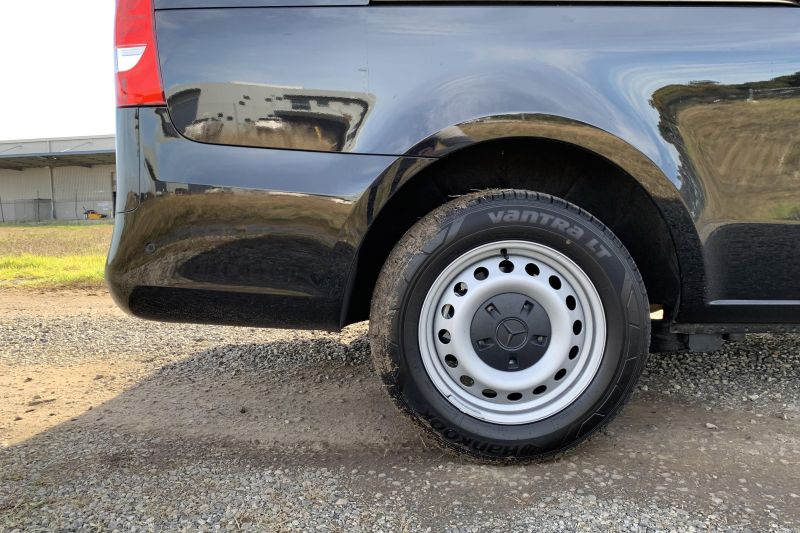Say hello to the Mercedes-Benz Vito goldilocks edition.
Some Vito models are targeted purely at people who want to carry a load, others aim to lug as many passengers around as possible.
The 116CDI Crew Cab LWB aims to do both. Along with five adult-sized seats, it has a load bay capable of carrying bikes, bags, or blocks of concrete with space to spare.
With a starting price in line with big, family-oriented crossovers like the Hyundai Palisade, you could even call it a bargain… provided you’re about substance, not style.

How much does the Mercedes-Benz Vito cost?
There countless Vito variants on offer in Australia, with countless body styles and interior configurations, so it’s unlikely any two end up costing exactly the same amount.
Our 116CDI LWB Crew Cab RWD tester had a list price of $60,500 before on-road costs, but an as-tested price of $67,765 before on-roads.
Fitted options included:
- Colour coded bumpers: $600
- Full bulkhead behind rear passenger seats with window: $1600
- Adaptive cruise control: $1500
- Rear LED interior lights: $160
- Comfort Package: $1290
- Comfort seats with lumbar support: $600
- Obsidian Black paint: $1515
In the van world, the 116CDI Crew Cab LWB is aligned with the Volkswagen Transporter crew cab ($51,490 to $57,490) and Renault Trafic LWB Crew Lifestyle ($53,490).
What do you get?
Standard equipment in the Vito Crew Van includes a five-seat interior, semi-automatic climate control, a lockable glovebox, cupholders, a comfort overhead control panel, and a storage bin at the base of the dashboard with a 12V slot.
The steering wheel is leather-trimmed, the exits are illuminated, and the front seats are four-way manually adjustable.
The rear seatbacks fold, there are ISOFIX and top tether points, and there’s a floor-level air vent for the rear passengers.
Mercedes-Benz has fitted dual sliding side doors and a lift-up tailgate, although barn-style doors are available for the load bay if you’d prefer.
The standard headlights are halogen reflector units, and there are no fog lights.
Infotainment comes courtesy of an ‘Audio 30’ head unit measuring 7.0 inches diagonally, complete with wired smartphone mirroring, Bluetooth, DAB radio, and a compass where the satellite navigation would feature on high-end models.
Is the Mercedes-Benz Vito safe?
The Mercedes-Benz Vito was crash tested by Euro NCAP in 2014, at which point it earned a five-star rating which was then carried over to ANCAP.
It scored 93 per cent for adult occupant protection, 87 per cent for child occupant protection, 67 per cent for pedestrian protection, and 85 per cent for safety assist.
Along with six airbags, the van has active safety assists such as autonomous emergency braking, blind-spot monitoring, lane-keeping assist, and a reversing camera working with parking sensors.
What is the Mercedes-Benz Vito like on the inside?
It’s strange sitting in a brand new Mercedes-Benz with conventional dials and a 7.0-inch screen, but what the Vito lacks in shock and awe it makes up for with ease of use.
Take the steering wheel. It’s simpler than the dual-tier, touch-sensitive tiller in the latest Mercedes passenger cars, with chunky buttons and an unfussy design, which means there’s no learning curve.
You just get in and use it, and it works. With simple analogue dials and a monochrome trip computer, there isn’t that much to fiddle with using the wheel anyway.
It’s a similar story with the 7.0-inch infotainment system, which is dead easy to navigate and quick to respond. There are no mousepads or voice prompts here, just easy-to-read shortcut buttons and large touch icons. It’s refreshing.
The driver and passenger sit in comfortable, upright seats trimmed in hardy cloth. There’s plenty of adjustment for taller drivers, and the seats are mounted high enough that you can almost eyeball drivers of some road-biased SUVs.
With plastic flooring and hard materials for the dashboard and storage bins, the Vito’s cabin isn’t the last word in tactility. It does feel unpretentious and hard-wearing, though, which is arguably more pertinent.
Storage spaces abound. There are massive door bins, above which sit smaller pockets for odds and ends, and the base of the dashboard is home to a massive plastic bucket for keys, sunglasses, or snacks.
The top of the dashboard has more space for documents, and there are cupholders in front of the driver and passenger.
Two USB ports are housed to the left of the infotainment screen. One is a fast charger, the other runs Apple CarPlay or Android Auto.
Rear legroom is seriously impressive, even with a lanky driver up front. You’ll get three full-sized people back there with plenty of headroom and decent shoulder room.
Although there are no personal air vents in the roof, a floor-level vent provides fresh air to the rear. Access is dead easy thanks to the light sliding doors, although powered doors would no doubt feel higher end.
Rear passengers in our tester were separated from the load bay by a full-sized partition, but no separator is standard.
Usually we’d talk boot space here, but the Vito has a load bay instead. It’s accessed by a large, unassisted boot lid that may prove a handful for shorter owners.
It has 4.1m3 of room back there, in a space measuring 1790mm at its widest point, 1337mm tall, and 2004mm long.
The vehicle’s payload is 837kg, and its maximum rear axle load is 1650kg.
What’s under the bonnet?
Power in the Vito 116CDI comes from a 2.1-litre four-cylinder turbo-diesel with 120kW of power and 380Nm of torque.
It’s sent to the rear wheels through a seven-speed automatic transmission.
Claimed combined fuel economy is 6.8 litres per 100km, we saw between 6.5 and 7.5L/100km in a week skewed heavily to highway driving.
Along with its 70-litre fuel tank, the Vito 116CDI has a 25L tank for AdBlue to treat the exhaust gases.
How does the Mercedes-Benz Vito drive?
It looks like a commercial vehicle, but the Vito drives with a sense of polish befitting a passenger car with the three-pointed star on its nose.
The four-cylinder diesel engine fires quietly and is never particularly clattery, even on cold mornings. It can be a bit gruff when pushed, but this diesel has been to finishing school.
With smooth low-down power delivery and light steering, the only real giveaway this is a van is its size.
At 5370mm long with a stubby little bonnet, you need to swing a bit wider on tight corners to avoid dragging the inside wheel across kerbs. Van life, right?
The engine isn’t exactly power-packed, especially when you consider the Vito tips the scales at 2213kg (kerb), but it gets up and rolling easily enough with only one person on board.
With a cabin full of people and a payload approaching capacity you’ll no doubt need to work the engine a bit harder, and take it further from its comfort zone more often.
It also feels punchy at highway speeds – at least, once the seven-speed automatic has had the chance to drop a few gears.
Speaking of which, the automatic is generally a smooth mover. It shuffles away unobtrusively in the background for the most part, although it occasionally needs a bit of a kick to drop a gear and get a move on.
Ride comfort is surprisingly good for a commercial vehicle. Where some vans crash and bash with nothing in the boot, the Vito feels well controlled over sharp bumps.
Very occasionally you’ll get the sense it could use more weight over the rear axle, as the tail wags the dog and the rear gets slightly out of control, but it’s very rare.
With excellent sight lines and light steering, not to mention its controlled ride, the Vito doesn’t feel out of place in the city.
Its size is prohibitive at times, and you don’t draw attention like maybe you would in a Hyundai Palisade, but you could use the car daily and not struggle.
It’s equally as home on the highway. The chunky load partition means noise doesn’t echo around the cabin like you might expect of a large van, and the engine is a mostly silent partner at 100km/h.
The (optional) adaptive cruise control system works with all the refinement you’d expect of a Mercedes-Benz, and the lane-keeping assist isn’t too intrusive.
With minimal road noise and a good sense of stability in crosswinds, this is a van you could happily drive long distances.
How much does the Mercedes-Benz Vito cost to run?
The Vito is backed by a five-year, 250,000km warranty with around-the-clock roadside assist for the same period.
Maintenance is required every 12 months or 25,000km.
A three-year prepaid service package for the Vito costs $2270, a four-year package is priced from $3143, and a five-year pack will set you back $3412.
CarExpert’s take on the Mercedes-Benz Vito
The Vito 116CDI LWB Crew Cab is a practical way to carry people and lots of equipment around.
That it manages to blend decent unladen driving dynamics with a usable payload is impressive, and its highway refinement won’t go unnoticed by passengers.
Click the images for the full gallery
MORE: Mercedes-Benz Vito news, reviews, comparisons and videos











